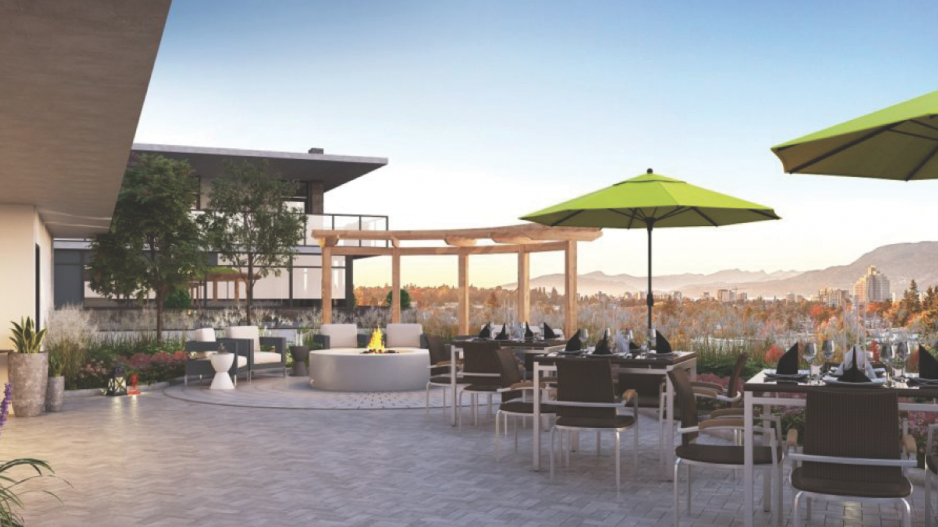The landscape of retirement homes is shifting. From independent living to 24-hour care homes, the structures, amenities, programs and philosophies are undergoing transitions. Some transformations are the result of a reduction in public funding for seniors’ homes, leading to more families taking care of their own for longer; meaning those who do go into residences will be doing so only when they are in need of 24-hour care.
In other cases, changes reflect a desire to make senior living more reflective of home-like environments, and retirement facilities are reaching into their own pockets and looking to private funding for creative solutions.
Element Lifestyle Retirement is one example of a company focusing on duplicating home environments to attract family members who are in any stage from independent to assisted living who want to maintain the lifestyle they are used to.
Element was founded in 2012 by Don Ho along with three partners. In 2015 it officially launched as a developer and operator of retirement communities. Ho was the founding director, CEO and president of CPAC (Care) Holdings Ltd., which was sold to Chartwell in 2005. He is considered a pioneer of the “aging in place” philosophy.
Element is currently developing two seniors’ residences in B.C. – Opal in Vancouver and Oasis in Langley – which have been established as leaders in intergenerational communities.
Comprising 142,000 square feet with 44 residential condominium units (available for sale to seniors), 56 rental units and 30 complex-care units, Opal will span an entire city block on the south side of King Edward between Yukon and Cambie. It is set to break ground in early 2017.
Ho’s daughter, Candy Ho, vice-president, marketing and corporate relations, for Element, says the new paradigm of seniors’ residences is meant to be adaptable for all needs and ages.
“If there’s one person in a couple that needs care, they’ll usually struggle at home,” she says. “The healthy person actually can be held back from living life fully because they want to care for their spouse. Our model allows both the healthy and ailing to live together and have their needs met.”
If parents want to live with their children or even grandchildren, that can be accommodated as well. Normal age restrictions are 55 and over, says Ho, but that’s just for one occupant.
Ultimately, Element is trying to reproduce as closely as possible a luxurious, almost club-like atmosphere where there are activities for all ages. For example, private dining areas will have a living space so children can play as though they were at home. Cooking lessons are available for making pizza or ice cream, so both the elderly and young can participate.
At Maison Senior Living in West Vancouver, a similar style of engagement occurs.
Erica Clarke, regional director of life enrichment at Maison, says programs are tailored to residents’ individual interests and family circumstances. Activities include art classes, TED talks, computer programs and vocational programs. Residents often continue with volunteer activities they had before moving in.
“Family-centred models are incorporated into programs from Day 1,” says Clarke. “There are play areas, arts and baking classes and concerts.”
Life-enrichment programs build relationships between residents, residents and staff, and with residents’ families. Common spaces within the building are meant to reflect a home living environment.
While Opal and Maison focus on improving the experience within one large facility, Dan Levitt says new models of seniors’ living are coming out of Europe that are quite different.
Levitt is an adjunct professor of gerontology at Simon Fraser University, a board member of the International Association of Homes and Services for the Aging and executive director of Tabor Village in Abbotsford.
He travels extensively studying seniors’ communities and says one prototype has residents living in smaller homes within separate communities.
“The old traditional nursing home is being replaced by the small-homes model,” he says. Residents have their own suites with a sitting area and bathroom. The kitchen is common and shared.
“Typically people in a seniors’ home regress,” says Levitt. “The more you can engage them and have them be active, the more active they will be. Even engaging people with music seems to increase their communication abilities.”
Levitt points to Providence Health Care’s work as a good example of disrupting current residential systems that often look more at efficiencies than lifestyles.
Jo-Ann Tait, director, elder care, palliative services, Providence Health Care, explains what Levitt is referring to.
“As a residential-care sector, we’ve been using the medical model of institutionalization, using models of efficiency,” she says. “We have deteriorated their independence and personal autonomy over time. How do we move to something that’s more desirable, more autonomous?”
At St. Vincent’s Heather at Cambie and 33rd Avenue, Providence is looking at building Honoria Conway Assisted Living.
“We’re looking at the opportunity to build fresh; what would we do from the ground up?”
After a series of staff engagement and strategic planning sessions, Providence came up with a model similar to what Levitt had seen in Europe – a more social model of small households, each housing about 10 people. They would have their own room and bath, but share common areas.
Groups of 32 of these houses would be their own community, with a secure perimeter within which would be a restaurant, theatre, daycare, pub and gardens, as an example.
“That’s what people are crying for,” Tait says. “They want the vibrancy of life to continue around them.”
The concept for Honoria Conway is set to be completed, with functional drawings, in spring 2017. There will be no funding from the Ministry of Health, so Providence is looking for capital investment.
“Our future is in knowing how the residents would have lived their lives and being able to strike a balance between what the families want and how we would have normally provided that,” says Tait. “We’re trying to tear up that unwritten rule book about not wanting to take risks.”




